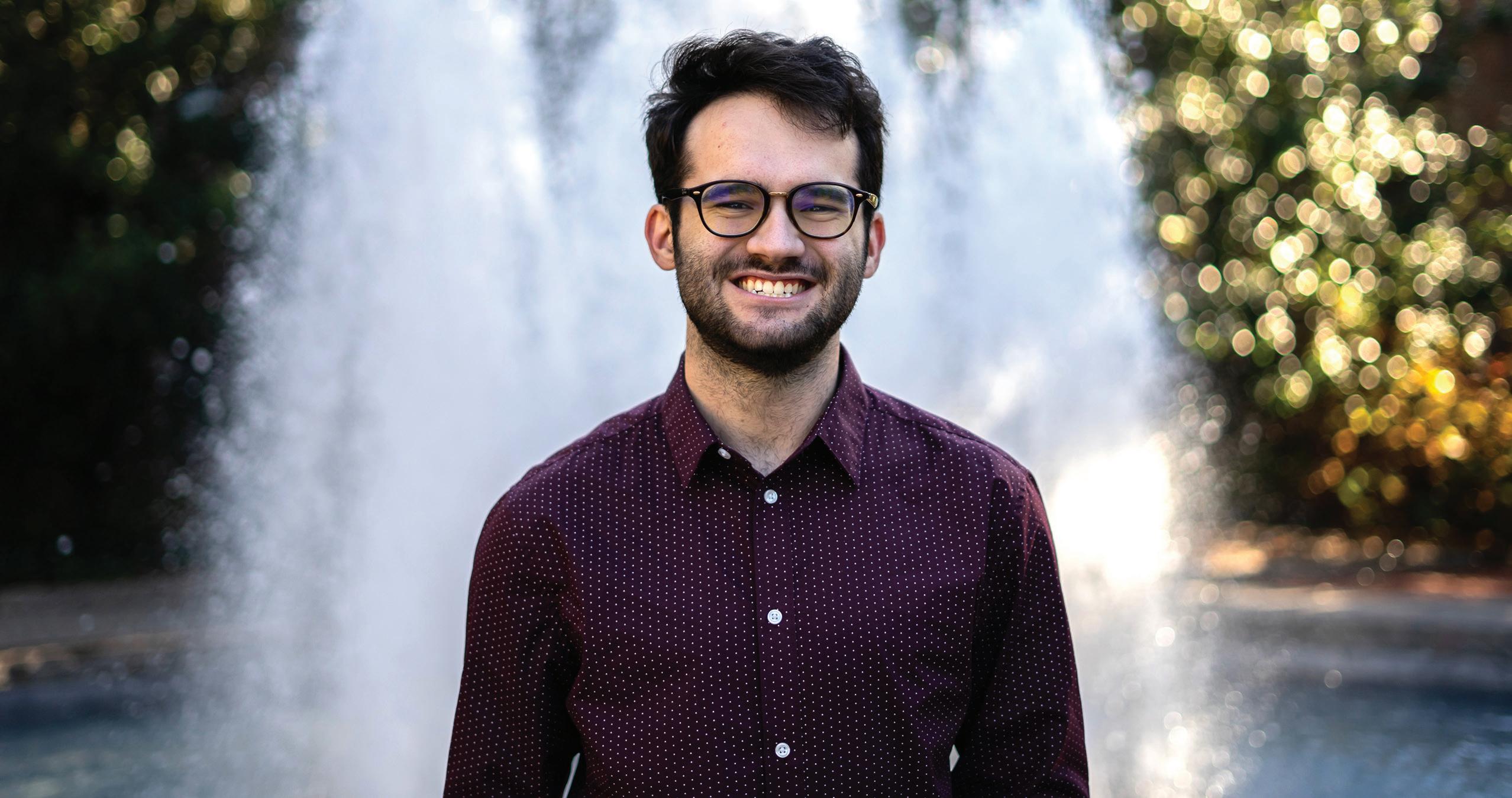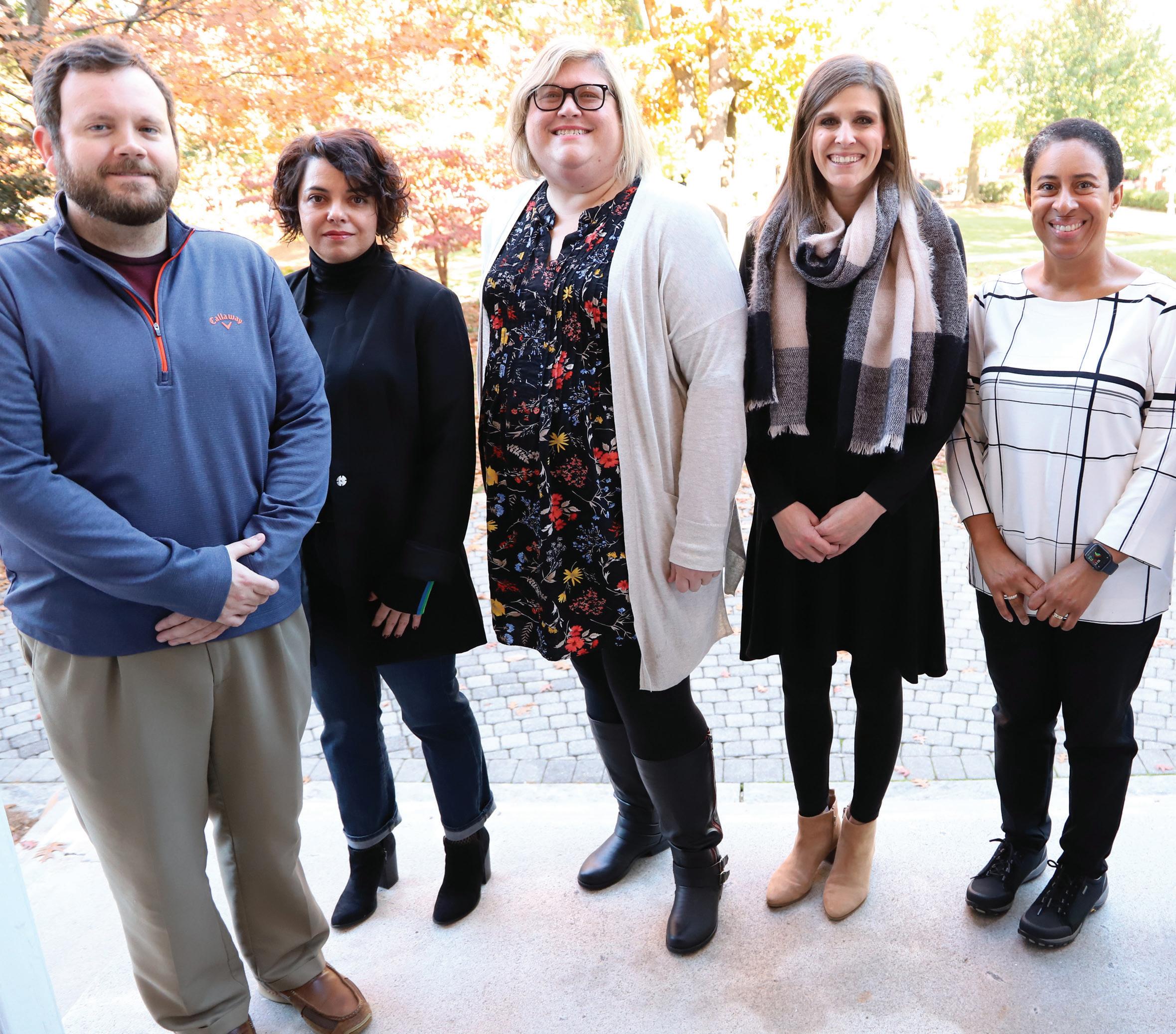HONORS
Alumni
Cori Bargmann is
RESHAPING SCIENCE By Jill Neimark
I
n the summer of 1979, neurobiologist Cori Bargmann scored her first science job in a biology lab at the University of Georgia. She spent each day preparing fly food from cornmeal and molasses. “You cannot imagine a less intellectually challenging job,” she laughed. Nevertheless, the Honors undergrad and Foundation Fellow was soon hooked on science. “I loved these smart people talking about really deep, interesting questions,” she said. “I loved how concrete the work was, and I especially loved how interested the UGA professors were in their students.” Little did she know her future held extraordinary achievements that would reshape scientific knowledge and inquiry—from research that led to an important breast cancer drug; to deep, broad discoveries about how nervous systems are built and work; to her position now as head of the ambitious Chan Zuckerberg Initiative’s science work. Funded by Facebook founder Mark Zuckerberg and his wife, Dr. Priscilla Chan, its mandate is to support the science and technology that would make it possible to cure or manage all diseases by 2100. As impossible as that sounds, Bargmann takes the task seriously, and even believes it’s possible to achieve. Bargmann is “a scintillating polymath” who is up to the task, explained neuroscientist Marc Tessier-Lavigne. He is now president of Stanford University, but for 10 years had an office next to Bargmann at the University of California, San Francisco, and they collaborated on some projects. “She has a breadth of knowledge both in science and outside it in literature and art that is just astonishing.” Erin Dolan, professor of biochemistry and molecular biology and Georgia Athletic Association Professor of Innovative Science Education in UGA’s Franklin College of Arts and Sciences, did her dissertation work in Bargmann’s lab at the University of California, San Francisco. “I had heard her at our program retreat and I just knew I wanted to work with her,” Dolan said. “She is provocative and succinct at the same time. She has the ability to think in ways that are just unparalleled. She can connect ideas and communicate them in a way that drives everyone’s thinking forward.” Bargmann grew up in Athens, the third of four sisters, in what she fondly referred to as “an insanely overeducated family.” Her parents, who met as translators in Nuremberg after World War II, emigrated to America, and her late father became a professor of statistics at UGA (the Bargmann Computer Lab is named after him). She was raised bilingual—her father spoke to her in English, her mother in German.
12
UGA HONORS PROGRAM MAGAZINE SPRING 2020
“Like many immigrants, my parents believed in education. We were immersed in music, art, math, and science,” Bargmann said. She loved growing up in a college town, and to this day feels most at home on a campus. At 20 she was a First Honor Graduate at UGA, and she went on to become a graduate student at the laboratory of biologist Robert Weinberg at MIT. Weinberg was working on “oncogenes”—genes that can trigger the transformation of normal tissue into a tumor. Her project, which was to isolate and clone an oncogene called neu, was a step on the path that led to the development of Herceptin, an important breast cancer medication. The mind of a worm In spite of her success at the Weinberg lab, Bargmann was restless. She really wanted to study how the brain works, so she took a position as a postdoc in the lab of MIT biologist Robert Horvitz, who would later win a Nobel Prize for worm research that revealed how genes regulate organ development as well as cell death. His laboratory was a hotbed of research into Caenorhabditis elegans—the most famous worm in science. C. elegans is an almost microscopic, translucent, deaf, and nearly blind nematode the size of a comma. The worm, however, has a complete nervous system, one that has yielded astonishing insights into the way all brains are built and operate. Bargmann was inspired by the fact that the worm’s entire nervous system had just been mapped in a project that took 20 years and resulted in a famous paper affectionately called “The Mind of a Worm.” “No brain has ever been mapped with that extraordinary level of detail,” said Bargmann. “I could not have done my work without that map. I still use that map today.” What can a worm tell us about ourselves? Lots, it turns out. In 1993, Bargmann’s experiments showed that the tiny worm was not just an empty tube moving around; it was a genius in terms of odor recognition. Humans are thought to detect as many as a trillion odors with their 400 smell receptors, but this tiny worm with only 302 neurons has over 1,000 receptors for smell. And because the worm is virtually see-through, Bargmann was able to watch individual neurons in action as worms responded to odors. Using powerful lasers to perform microscopic surgeries, and equally powerful microscopes, she watched worm after worm undulate toward smells that signaled delicious bacteria nearby, but rapidly wriggle away from harmful molecules, and she proved that worms are born with neurons already hardwired to either propel or repel it from specific odors.













